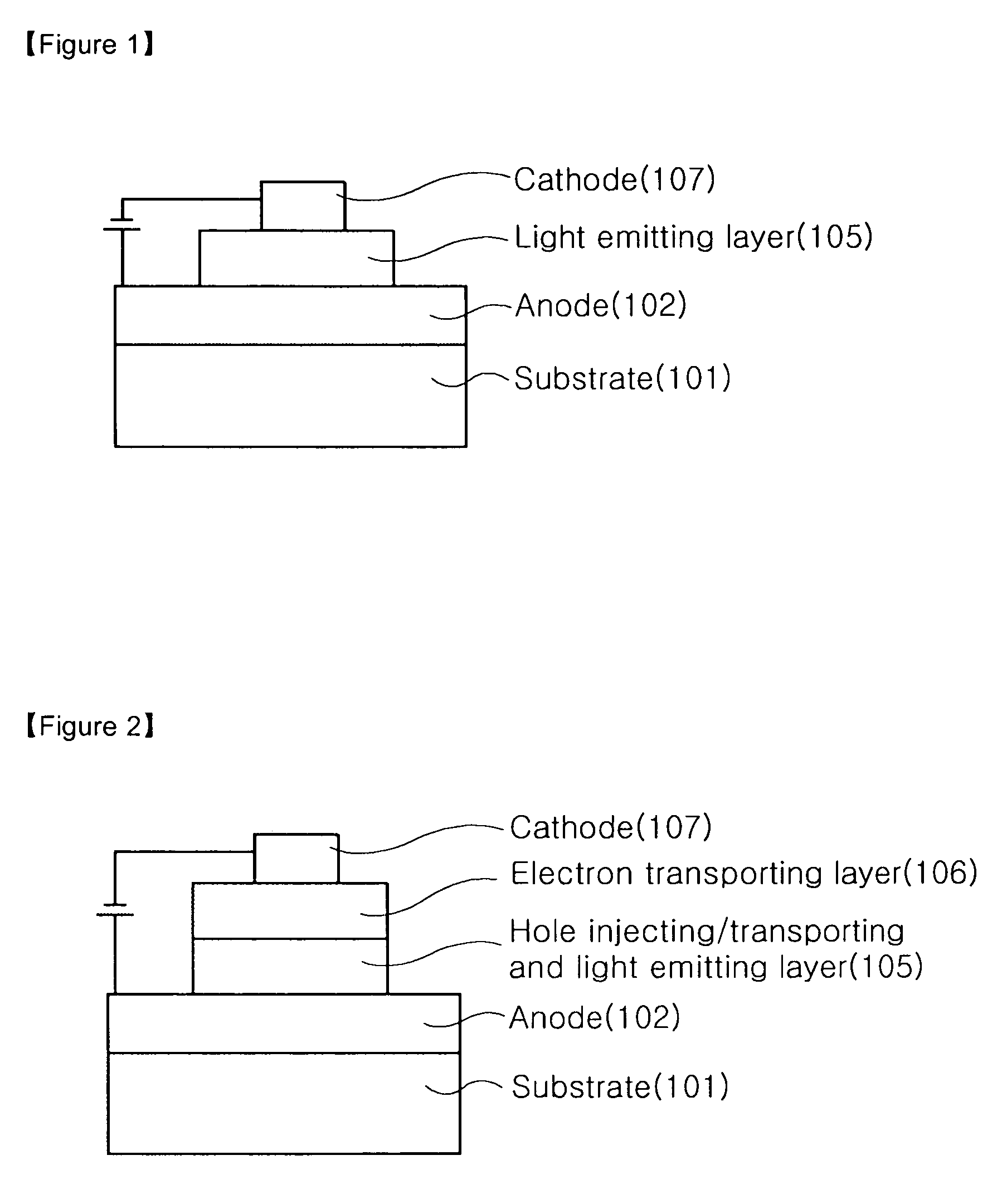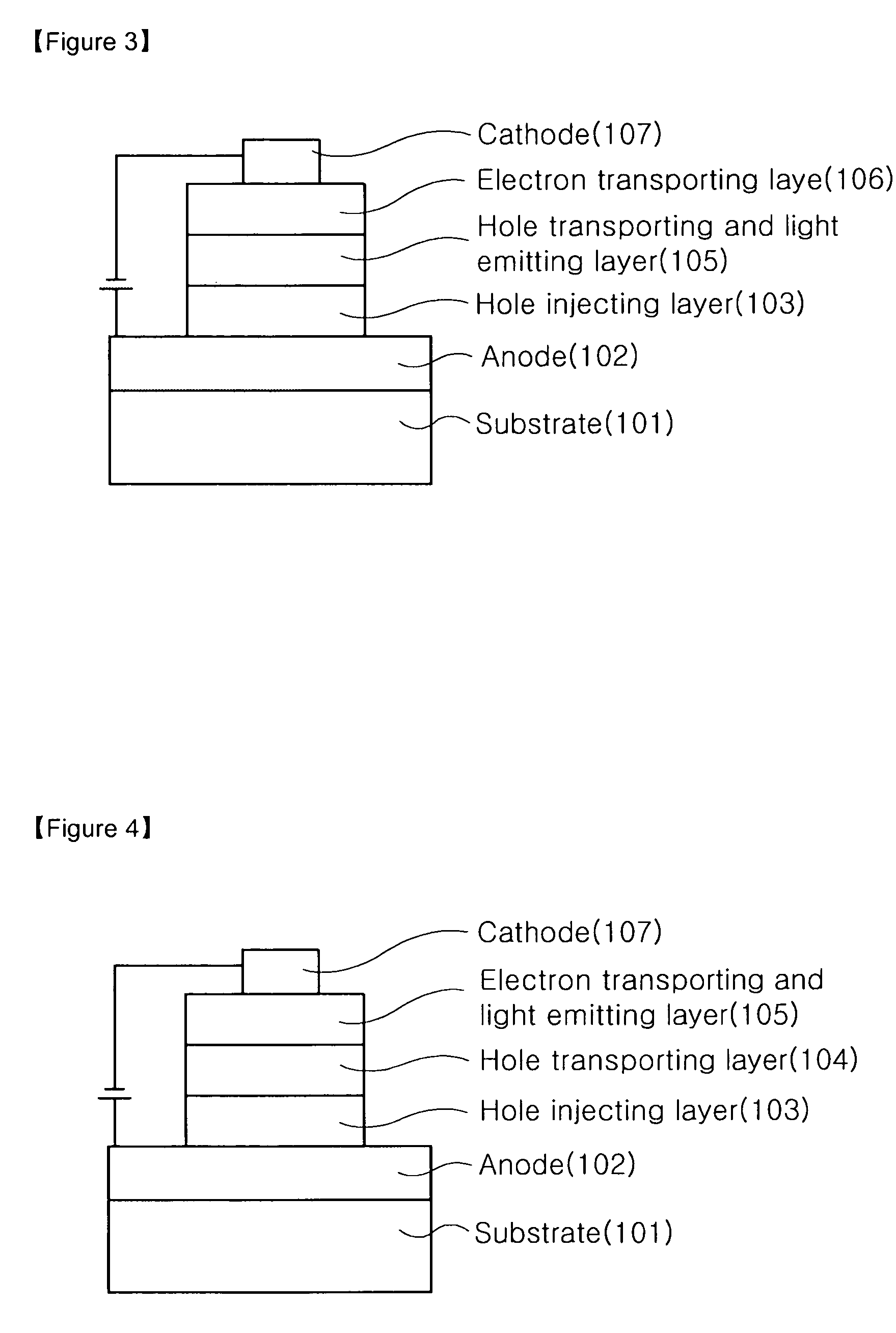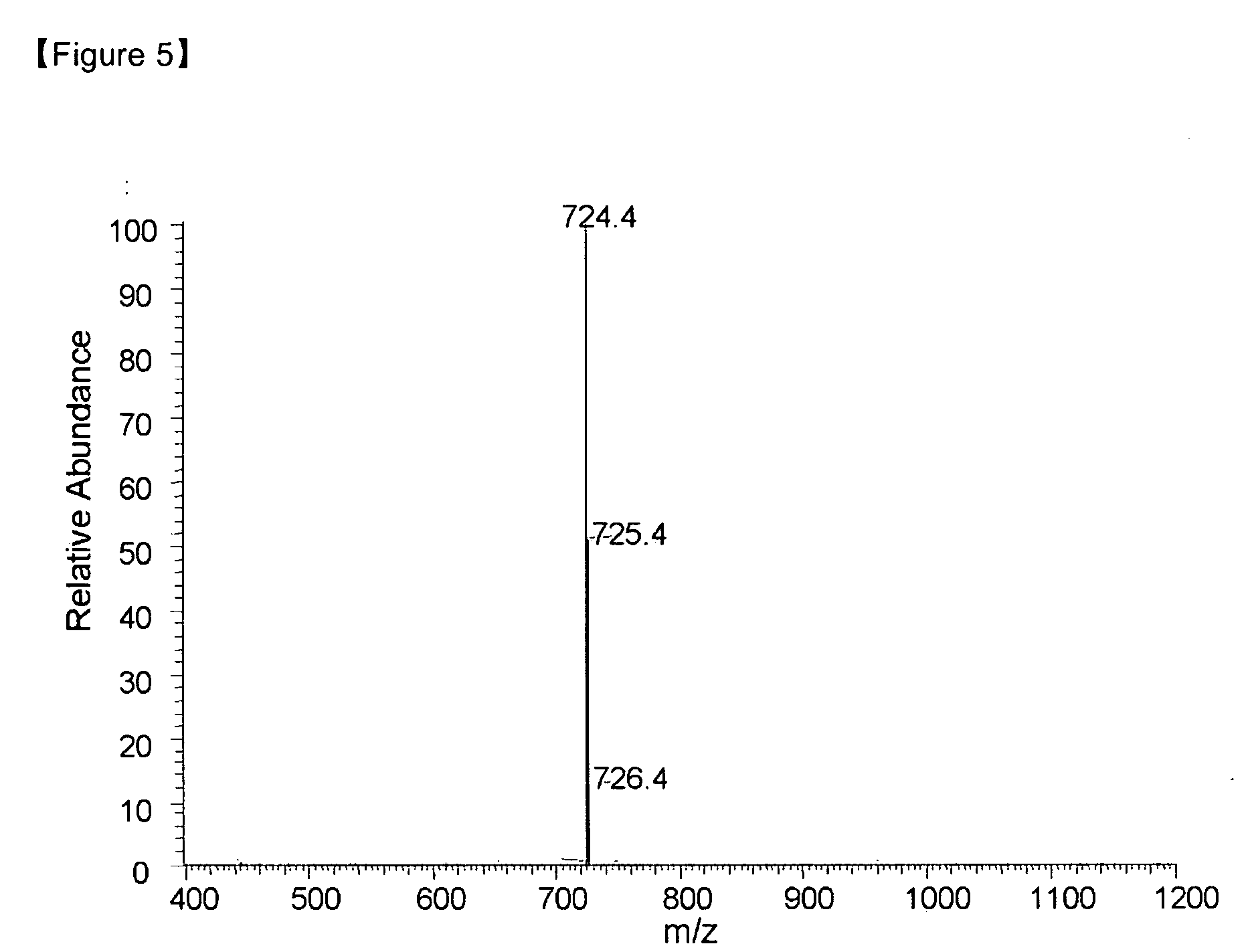Novel imidazoquinazoline derivative, process for preparing the same, and organic electronic device using the same
- Summary
- Abstract
- Description
- Claims
- Application Information
AI Technical Summary
Benefits of technology
Problems solved by technology
Method used
Image
Examples
preparation example 1
Preparation of Compound A
[0074] 1-1. Preparation of Compound A-1
[0075] 2-(2-aminophenyl)benzimidazole (4.18 g, 20.0 mmol) and 4-bromobenzaldehyde (4.07 g, 22.0 mmol) are dissolved in 50 mL of nitrobenzene, and then the solution was heated under stirring for 20 hours. The reaction temperature was cooled to room temperature, and filtered to obtain a yellow solid, and the solid was washed with ethylether and dried to prepare a compound A-1 (5.1 g, yield 67.8%).
[0076] MS [M+H]+=376
[0077] 1-2. Preparation of Compound A-2
[0078] To the compound A-1 (5.1 g, 13.6 mmol) as prepared in the 1-1 step, were added KMnO4 (2.3 g, 0.15 mmol) and 100 mL of THF, and the mixture was stirred at normal temperature for 12 hours. The reaction solution was filtered with Celite to remove a solid compound. To the resultant, were added 100 mL of H2O and 50 mL of ethylether, and an organic material layer was separated out and dried over anhydrous magnesium sulfate. The organic solvent was distilled off in...
preparation example 2
Preparation of Compound B
[0083] 2-1. Preparation of Compound B-1
[0084] A compound B-1 was prepared in the same manner as in Preparation Example 1-1, except that in Preparation Example 1-1,3-bromobenzaldehyde was used instead of 4-bromobenzaldehyde.
[0085] MS [M+H]+=376
[0086] 2-2. Preparation of Compound B-2
[0087] A compound B-2 was prepared in the same manner as in Preparation Example 1-2, except that in Preparation Example 1-2, the compound B-1 as prepared in the 2-1 step was used instead of the compound A-1.
[0088] MS [M+H]+=374
[0089] 2-3. Preparation of Compound B
[0090] A compound B was prepared in the same manner as in Preparation Example 1-3, except that in Preparation Example 1-3, the compound B-2 as prepared in the 2-2 step was used instead of the compound A-2.
[0091] MS [M+H]+=422
preparation example 3
Preparation of Compound C
[0092] 3-1. Preparation of Compound C-1
[0093] 9-Bromoanthracene (2.57 g, 10.00 mmol), 2-naphthyl boric acid (1.80 g, 12.65 mmol) and sodium carbonate (2.34 g, 22.1 mmol) were suspended in a mixture of toluene (20 mL), ethanol (3 mL) and water (10 mL). To the suspension, was added tetrakis(triphenylphosphine)palladium (0.25 g, 0.22 mmol). The mixture was stirred under reflux for about 24 hours, and then the refluxed mixture was cooled to room temperature. The organic layer was separated and washed with water, and the aqueous layer was extracted by chloroform. The organic extract was dried over magnesium sulfate, and concentrated in vacuo to prepare a 9-(2-naphthyl)anthracene compound C-1 (2.55 g, yield 84).
[0094] MS [M+H]+=305
[0095] 3-2. Preparation of Compound C
[0096] To a solution of 9-(2-naphthyl)anthracene (1.89 g, 6.24 mmol) as prepared in the 3-1 step in dry CCl4 (60 ml), was added dropwise bromine (0.32 mL, 6.24 mmol) at 0. The reaction mixture ...
PUM
| Property | Measurement | Unit |
|---|---|---|
| Fraction | aaaaa | aaaaa |
| Volume | aaaaa | aaaaa |
| Fraction | aaaaa | aaaaa |
Abstract
Description
Claims
Application Information
 Login to View More
Login to View More - R&D
- Intellectual Property
- Life Sciences
- Materials
- Tech Scout
- Unparalleled Data Quality
- Higher Quality Content
- 60% Fewer Hallucinations
Browse by: Latest US Patents, China's latest patents, Technical Efficacy Thesaurus, Application Domain, Technology Topic, Popular Technical Reports.
© 2025 PatSnap. All rights reserved.Legal|Privacy policy|Modern Slavery Act Transparency Statement|Sitemap|About US| Contact US: help@patsnap.com



